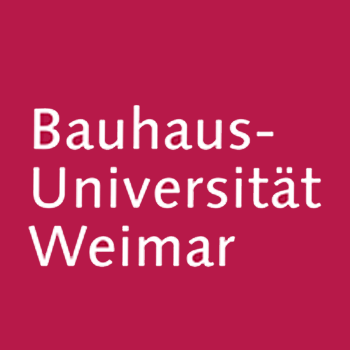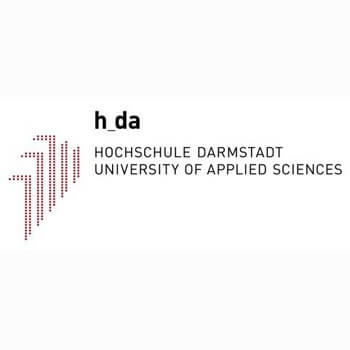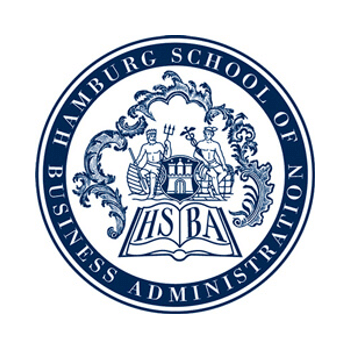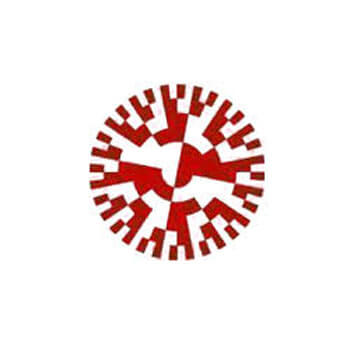Bauhaus University, Weimar

Founded: 1860
Address: Geschwister-Scholl-Straße 8 - Weimar, Germany
Phone: +493643 581112
Address: Geschwister-Scholl-Straße 8 - Weimar, Germany
Phone: +493643 581112
Here you find out Bauhaus University, Weimar complete information about fees, location, degree Bauhaus University, Weimar offers, number, website, and much more. Bauhaus University, Weimar is a leading university in Weimar - Germany.
You can also find out jobs at Bauhaus University, Weimar for students, teachers, and professors. We also update the database for an internship at Bauhaus University, Weimar for students.
The Bauhaus, the most influential design school in the 20th century, was founded in 1919 in our main building on campus. Distinguished experts from various disciplines and countries have worked here together with their students to revolutionize education. They have left a permanent mark on the design of the living world through modern art, technology and science. What they produced was an answe...r to the burning questions of art, culture and society in the modern age.
A tie to this history was established in the renaming of our institute as the Bauhaus-Universität Weimar in 1996. We are an international university at home in the unique, cultural city of Weimar. We are a vibrant institution, not a museum. We invoke this tremendous paradigm to answer central questions regarding art and culture, technology, science and society using modern methods. This also includes the critical analysis of the Bauhaus history and its historical impact, which is part of the contradictory history of progress that began almost 100 years ago.
In order to meet these requirements, we have carefully created the profile of our university which is focused on our four faculties: Architecture and Urbanism, Civil Engineering, Art and Design, and Media. Experimentation and excellence prevail throughout these faculties in which transdisciplinary projects and cooperations in research and education are also conducted.
The formation of the »Kunstschule« came about through a long-sighted developmental strategy for the Grand Duchy: After the intellectual golden age in Weimar had passed, a new cultural significance should be recovered through the cultivation of art and music education.
The Weimar School became one of the leading art schools in Germany during the 19th century. The school became part of art history under the heading »Weimarer Malerschule« (Weimar School of Artists). Students came from all parts of Germany and from around the world, among them were Max Liebermann and Max Beckmann. Despite the dependency upon the Grand Duke and the conservative attitude of the authorities, a progress teaching and learning concept prevailed. So much so that the students were able to select their professors.
In 1910 the »Kunstschule« was revaluated as the »Großherzoglich Sächsischen Hochschule für bildende Kunst« (Grand Ducal Saxon College of Fine Arts) in Weimar. The painter Fritz Mackensen, a committed and reform-oriented, who later became a significant Nazi-activist, took on the role of the director.
Since the 1860s there had been efforts within the Grand Duchy to connect trade and industry with the arts. Henry van de Velde, an internationally renowned designer and reformer, was appointed in 1902 for this purpose. Van de Velde set up a vocational art seminar that was succeeded in 1908 by the »Großherzogliche Kunstgewerbeschule« (Grand Ducal Vocational Arts School), which he directed until its closure in 1915. The school attended to the products created by the Thuringian craftsmen and industry and became an early modernist laboratory. The Vocational Art School"s faculty was composed of individuals from various countries. Work of the »Kunstgewerbeschule« suffered, however, due to a lack of institutional and financial recognition from the Grand Duchy. Professional competitors and conservative citizens in Weimar also antagonised van de Velde.
In 1905 and 1906 the building of the »Kunstgewerbeschule« was erected, which today houses the Faculty of Art and Design, according to van de Velde"s plans. During this time he was commissioned to create a new building for the College of Fine Arts. The building was completed in 1911. Today it is the Main Building of the Bauhaus-Universität Weimar.
Under the direction of the architect Otto Bartning, who in 1918 was one of the master-minds behind the foundation of the Bauhaus, the university offered a conventional architectural education for the first time in Weimar as well as the continuation of the artisan workshops that followed the industrial form design trends. The »Hochschule für bildende Kunst« (College of Fine Arts) existed at the same time as its own institution but it had already become decreasingly important.
In addition to Bartning, there were other prominent individuals who had a global impact on the shape of architecture and urban design in the 20th century. Ernst Neufert became the director of the architecture faculty in 1926 and managed the »offene Bauatelier« (open constructional atelier) together with Bartning. Neufert specialised in the rationalisation of construction management and reformed the dissemination of technical information. He later worked on behalf of Albert Speer for the Nazi regime and became a professor in Darmstadt in 1952.
Cornelis van Eesteren began teaching urban design in Weimar in 1927. He was the chairman of the Congrès International d"Architecture Moderne (CIAM) from 1930 to 1947 and thus a central figure of international modernity. With the arrival of the civil engineer Max Mayer, the university gained a powerful advocate for effective technical and economical rationalisation along the lines of Fordism.
Today the Bauhaus-Universität Weimar, with its four faculties of Architecture and Urbanism, Civil Engineering, Art and Design and Media, has a very special profile and offers a range of nearly 40 study courses that are unique in Germany; from fine arts and product design to media design and media culture, architecture and civil engineering environmental science and project management. Currently there are 4,000 students enrolled at the Bauhaus-Universität Weimar, including about 450 foreign students.
Indebted to Humboldt’s ideal of a unity between university research and teaching, the Bauhaus-Universität Weimar has defined four research focal points and four art-design core areas, in addition to its traditional working sectors. The research focal points are: cultural-scientific media research; digital engineering; urban, infrastructure and space research, and materials and constructions. In the art-design core areas special attention is given to film and the moving image, art in the public domain, product design and the training of architects in general.
You can also find out jobs at Bauhaus University, Weimar for students, teachers, and professors. We also update the database for an internship at Bauhaus University, Weimar for students.
The Bauhaus, the most influential design school in the 20th century, was founded in 1919 in our main building on campus. Distinguished experts from various disciplines and countries have worked here together with their students to revolutionize education. They have left a permanent mark on the design of the living world through modern art, technology and science. What they produced was an answe...r to the burning questions of art, culture and society in the modern age.
A tie to this history was established in the renaming of our institute as the Bauhaus-Universität Weimar in 1996. We are an international university at home in the unique, cultural city of Weimar. We are a vibrant institution, not a museum. We invoke this tremendous paradigm to answer central questions regarding art and culture, technology, science and society using modern methods. This also includes the critical analysis of the Bauhaus history and its historical impact, which is part of the contradictory history of progress that began almost 100 years ago.
In order to meet these requirements, we have carefully created the profile of our university which is focused on our four faculties: Architecture and Urbanism, Civil Engineering, Art and Design, and Media. Experimentation and excellence prevail throughout these faculties in which transdisciplinary projects and cooperations in research and education are also conducted.
The formation of the »Kunstschule« came about through a long-sighted developmental strategy for the Grand Duchy: After the intellectual golden age in Weimar had passed, a new cultural significance should be recovered through the cultivation of art and music education.
The Weimar School became one of the leading art schools in Germany during the 19th century. The school became part of art history under the heading »Weimarer Malerschule« (Weimar School of Artists). Students came from all parts of Germany and from around the world, among them were Max Liebermann and Max Beckmann. Despite the dependency upon the Grand Duke and the conservative attitude of the authorities, a progress teaching and learning concept prevailed. So much so that the students were able to select their professors.
In 1910 the »Kunstschule« was revaluated as the »Großherzoglich Sächsischen Hochschule für bildende Kunst« (Grand Ducal Saxon College of Fine Arts) in Weimar. The painter Fritz Mackensen, a committed and reform-oriented, who later became a significant Nazi-activist, took on the role of the director.
Since the 1860s there had been efforts within the Grand Duchy to connect trade and industry with the arts. Henry van de Velde, an internationally renowned designer and reformer, was appointed in 1902 for this purpose. Van de Velde set up a vocational art seminar that was succeeded in 1908 by the »Großherzogliche Kunstgewerbeschule« (Grand Ducal Vocational Arts School), which he directed until its closure in 1915. The school attended to the products created by the Thuringian craftsmen and industry and became an early modernist laboratory. The Vocational Art School"s faculty was composed of individuals from various countries. Work of the »Kunstgewerbeschule« suffered, however, due to a lack of institutional and financial recognition from the Grand Duchy. Professional competitors and conservative citizens in Weimar also antagonised van de Velde.
In 1905 and 1906 the building of the »Kunstgewerbeschule« was erected, which today houses the Faculty of Art and Design, according to van de Velde"s plans. During this time he was commissioned to create a new building for the College of Fine Arts. The building was completed in 1911. Today it is the Main Building of the Bauhaus-Universität Weimar.
Under the direction of the architect Otto Bartning, who in 1918 was one of the master-minds behind the foundation of the Bauhaus, the university offered a conventional architectural education for the first time in Weimar as well as the continuation of the artisan workshops that followed the industrial form design trends. The »Hochschule für bildende Kunst« (College of Fine Arts) existed at the same time as its own institution but it had already become decreasingly important.
In addition to Bartning, there were other prominent individuals who had a global impact on the shape of architecture and urban design in the 20th century. Ernst Neufert became the director of the architecture faculty in 1926 and managed the »offene Bauatelier« (open constructional atelier) together with Bartning. Neufert specialised in the rationalisation of construction management and reformed the dissemination of technical information. He later worked on behalf of Albert Speer for the Nazi regime and became a professor in Darmstadt in 1952.
Cornelis van Eesteren began teaching urban design in Weimar in 1927. He was the chairman of the Congrès International d"Architecture Moderne (CIAM) from 1930 to 1947 and thus a central figure of international modernity. With the arrival of the civil engineer Max Mayer, the university gained a powerful advocate for effective technical and economical rationalisation along the lines of Fordism.
Today the Bauhaus-Universität Weimar, with its four faculties of Architecture and Urbanism, Civil Engineering, Art and Design and Media, has a very special profile and offers a range of nearly 40 study courses that are unique in Germany; from fine arts and product design to media design and media culture, architecture and civil engineering environmental science and project management. Currently there are 4,000 students enrolled at the Bauhaus-Universität Weimar, including about 450 foreign students.
Indebted to Humboldt’s ideal of a unity between university research and teaching, the Bauhaus-Universität Weimar has defined four research focal points and four art-design core areas, in addition to its traditional working sectors. The research focal points are: cultural-scientific media research; digital engineering; urban, infrastructure and space research, and materials and constructions. In the art-design core areas special attention is given to film and the moving image, art in the public domain, product design and the training of architects in general.
Read More
Details:
LeaderShip: President: Prof. Dr. Winfried Speitkamp
Fees:
Time:
Phone Number: +493643 581112
City: Weimar
Fees:
Time:
Phone Number: +493643 581112
City: Weimar
Timing:
Country: Germany
Staff:
Website: http://www.uni-weimar.de
Country: Germany
Staff:
Website: http://www.uni-weimar.de
Subjects:
Jobs in Bauhaus University, Weimar
Currently, there is no job opening in Bauhaus University, Weimar as per our database.



















Leave a Reply